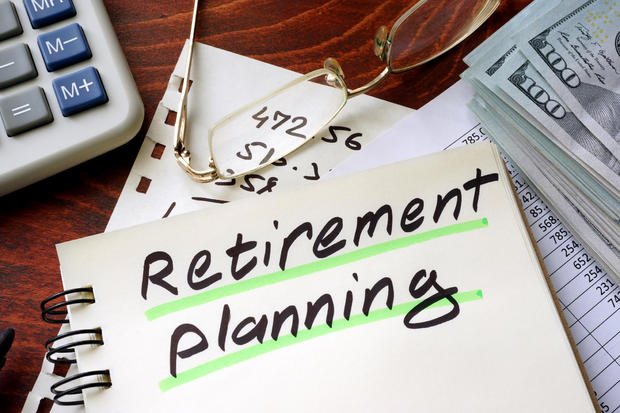How do you save for retirement as a freelancer?
The freelance workforce is expanding and with that growth comes an increased need for retirement plans that fundamentally differ from the employer-sponsored 401(k) savings model.
There are now 55 million freelance workers in the U.S., or about a third of the country's labor force, according to a report by freelancing website UpWork and the Freelancers Union.
Although there are perks to freelancing, such as setting your own hours, there also are downsides. Payments for freelance gigs may vary in amount or timeliness or consistency -- or all three -- and there may be times during the year when you don't have a steady flow of cash from clients, making it difficult to pay your monthly bills much less plan for retirement.
If this sounds like you, you're not alone: 42 percent of U.S. workers don't have access to an employer-based retirement plan, an analysis from the Pew Charitable Trusts found last year.
So if you are a freelance worker -- or independent contractor, small business owner, a gig worker or otherwise self-employed -- and you don't have a company-sponsored retirement plan, here are some steps you can take to make for a more secure retirement.
DIVVY UP EACH FREELANCE CHECK INTO SPENDING AND SAVING
Especially for freelancers just starting out, and those who have other considerations such as student loans or frequent moves, it can be intimidating to put money into an account you can't easily access in an emergency.
"I've rarely seen a freelancer who has sufficient cash flow throughout the course of the year," said Jonathan Medows, a certified public accountant. "Especially when you get started, you don't know what your [work and payment] cycles are going to be."
To get over the psychological barrier of starting to save, it helps to make saving a habit. For some independent workers, that means automatically divvying up every freelance payment they get into different accounts set up for different purposes, including one for retirement.
"One thing people do is have a percentage split," said Sophia Bera, founder of Gen Y Planning. "Say, of every freelance check they get, 20 percent goes to the checking account, 50 percent goes to [retirement funds], 15 percent to savings, and 15 percent to taxes."
But what should that retirement account be? Here are the major options:
Start with a "myRA" plan
A myRA plan is considered a starter option for retirement saving. Your money is invested in a U.S. Treasury savings bond that paid annual interest of just under 2 percent last year. (The rate is 2.25 percent this year.)
There's no penalty to take out money in a pinch, because contributions are made after taxes. A myRA plan has an accumulation limit -- a total of $15,000 or 30 years, whichever comes first -- at which point the money will stop earning interest and must be moved to another retirement account. You can open a myRA if you have an annual income below $132,000 if single or below $194,000 if married and filing taxes jointly.
The plan's adaptability makes it especially appealing for freelancers just starting to save. "It has low fees, is easy to access, and for a lot of contractors it's very flexible: you can take the money out and use it without paying any taxes, penalty or fees -- that's important when you have inconsistent incomes." Justin King, director of the Family Centered Social Policy Program at the New America Foundation, told CBS MoneyWatch.
Traditional and Roth IRAs
There are several other types of individual retirement accounts, or IRAs, that may be better options, depending on how aggressively you wish to invest your retirement savings. Keep in mind, if you diversify saving among different IRA accounts, there are annual contribution limits for how much you can sock away in total. That annual limit is $5,500 before age 50 and $6,500 if you're age 50 or older.
In a traditional IRA, you get a tax deduction for putting in money (similar to many employer-based plans that deduct pre-tax dollars from your paycheck) and pay taxes on withdrawal.
In a Roth IRA, taxes are paid up front, but money can be withdrawn tax free after age 59 ½.
If your working income is at the lower end of the scale and a your income tax rate is not very high -- as is the case for many early-career freelancers -- it may be worth paying the taxes up front and contributing to a Roth IRA rather than waiting to see how rates may change years down the road with a traditional IRA. "You have to consider the tax savings now, versus the related growth if you don't defer the tax savings and get taxed later on," Medows said.
Keep in mind: a 10 percent tax will apply if you withdraw IRA or retirement plan assets before you reach age 59½, with only a few exceptions.
"Solo" 401(k)s
Individual 401(k) plans mimic the ones set up by large employers, but they can only be used by self-employed individuals -- owners of a business with no employees -- and their spouses. Money is taxed on withdrawal, and subject to the 10 percent penalty if taken out early. Solo 401(k) plans have annual contribution limits of $18,000 per saver under 50 or $24,000 per savers over 50 for 2017, so owners and their spouses who don't work for another business can double those numbers by each contributing to a solo 401(k) .
SEP IRAs
Landed a big freelance account or looking to sock away even more tax-deferred cash? A SEP IRA (or Simplified Employee Pension Individual Retirement Account) may be your best bet. That's because a SEP IRA has an annual contribution limit of 25 percent of your total annual compensation or a maximum $54,000 saved yearly. The money and its investment returns are taxed on withdrawal.
If business is going gangbusters, Bera of Gen Y Planning said, "It becomes really important to funnel money into your SEP IRA. If you're making $100,000 and putting 20 percent in your SEP IRA, you're only paying income taxes on $80,000 and you're saving $6,000 or $7,000 in taxes."
And you don't need to be exclusively self-employed to take advantage. Anyone with some freelance income is eligible to set up a SEP IRA, making it a good option for the full-time worker who has a few side gigs.
SAVE AT LEAST 10% TO 15% OF YOUR INCOME
Even if you don't plan to stop working at 65, or even 70, saving money for your later years can make a huge difference in your quality of life as you age. You can make your current freelance life simpler by paying your "future self" first and automating your payments into your retirement plans each time a freelance check is deposited. Most experts recommend saving 10 percent to 15 percent of your income.
Low-income savers also get a tax credit on top of the tax deduction for certain retirement accounts.
As always, you should compare plans to see which option is best for you depending on your income, expenses and financial goals.
Don't forget: If you are self-employed and had net earnings greater than $400, you will need to file a 1040 form with the IRS to pay taxes for Medicare and Social Security, which would normally be withheld by your employer.




